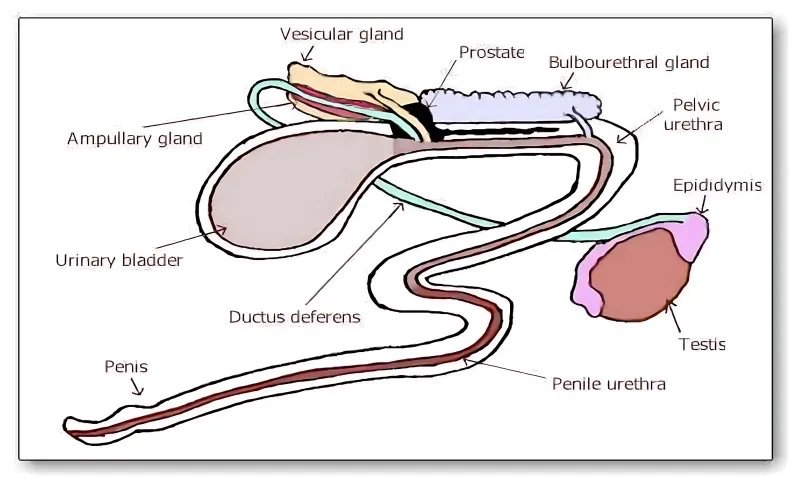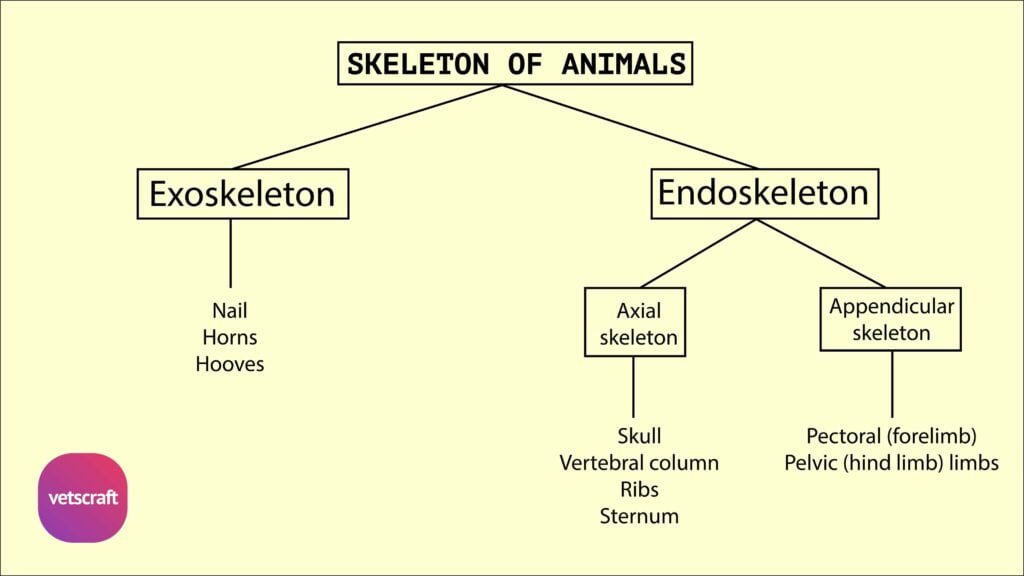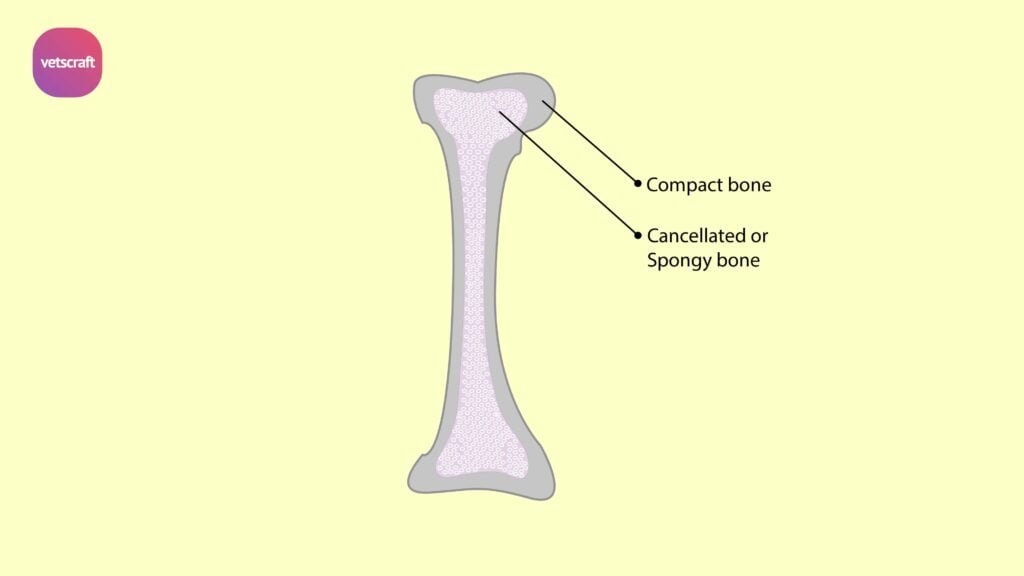TABLE OF CONTENTS
Species Variations of the Penis in Male Animals: Anatomy and Differences
The penis in male animals exhibits significant species variations in terms of structure, size, and function, which are closely tied to reproductive strategies and anatomy.
The penis of animals is the male copulatory organ, composed of white fibrous tissue and a small amount of erectile tissue. Read more about the penis (parts, types, muscles, etc.).

Bull
The penis of the bull extends from the ischial arch forward between the thighs to the umbilical region of the abdominal wall. It is supported by the fascia penis, and its prescrotal part is enclosed in a cutaneous pouch called the prepuce. Cylindrical in form, it measures approximately 90 cm in an adult bull. The penis can be divided into three parts: the root, the body, and the glans.
The root is attached to the lateral aspects of the ischial arch by two crura, which converge and unite below the arch to form the root of the penis.
The urethra passes over the arch between the crura and curves forward to become incorporated within the substance of the penis. The body begins at the junction of the crura and forms the bulk of the organ.
It is flattened from top to bottom and presents four surfaces: dorsal, ventral, and two lateral surfaces.
At its origin, it is attached to the symphysis ischii by two strong bands known as the suspensory ligaments of the penis. Just behind the scrotum, it forms an S-shaped curve called the sigmoid flexure, where approximately 30 cm of the penis is folded. This portion is released during erection.
The glans penis is the free end of the organ and measures about 8 cm in length. Its extremity is pointed and twisted.
The twisted end exhibits a ventrolateral groove, and the urethral process projects as a ridge within this groove. The external urethral orifice is located at the end of this process. The penis is primarily composed of white fibrous tissue.
It remains remarkably dense and firm even in the non-erect state. During erection, it undergoes little enlargement but becomes more rigid.
Ram and Buck
The free extremity of the penis is very distinctive in the ram and buck, with a well-developed urethral process that extends beyond the glans penis.
Stallion
The penis of the stallion is shorter but has a larger diameter compared to other species, measuring about 50 cm in length in the quiescent state. During erection, it undergoes approximately a 50% increase in length. The erectile tissue is rich in elastic and muscular fibers, making the penis very soft and pliable.
The glans is enlarged, and its base forms a prominent margin known as the corona glandis. Within the glans is a depression called the fossa glandis. The urethra protrudes into this fossa as the free urethral process. Dorsal to the urethral process, the fossa forms a diverticulum known as the urethral sinus, which is a common site for the accumulation of smegma.
Boar
The penis of the boar generally resembles that of the bull. However, the sigmoid flexure is located in the prescrotal region. The cranial part of the penis is spirally twisted, a feature that becomes especially prominent during erection.
Dog
In the cranial part of the dog’s penis, there is a bone called the os penis, which has a ventral groove for the lodgment of the urethra.
The glans is very long and extends over the entire length of the os penis. The cranial part of the glans is cylindrical, ending in a pointed free extremity. The caudal part features a rounded enlargement known as the bulbus glandis. Both regions are composed of erectile tissue.
Rabbit
From the root, the body of the penis initially extends forward, but just before reaching the testicles, it makes an almost U-shaped turn backward. As a result, the glans penis is directed caudally (backward) in the rabbit. The free extremity of the penis is known as the pars libera.
Cock
A true penis is absent in the cock. Instead, the copulatory apparatus is located on the ventral aspect of the caudal end of the cloaca. It consists of two papillae of the vas deferens, two vascular bodies, a phallus, and two lymphatic folds.

